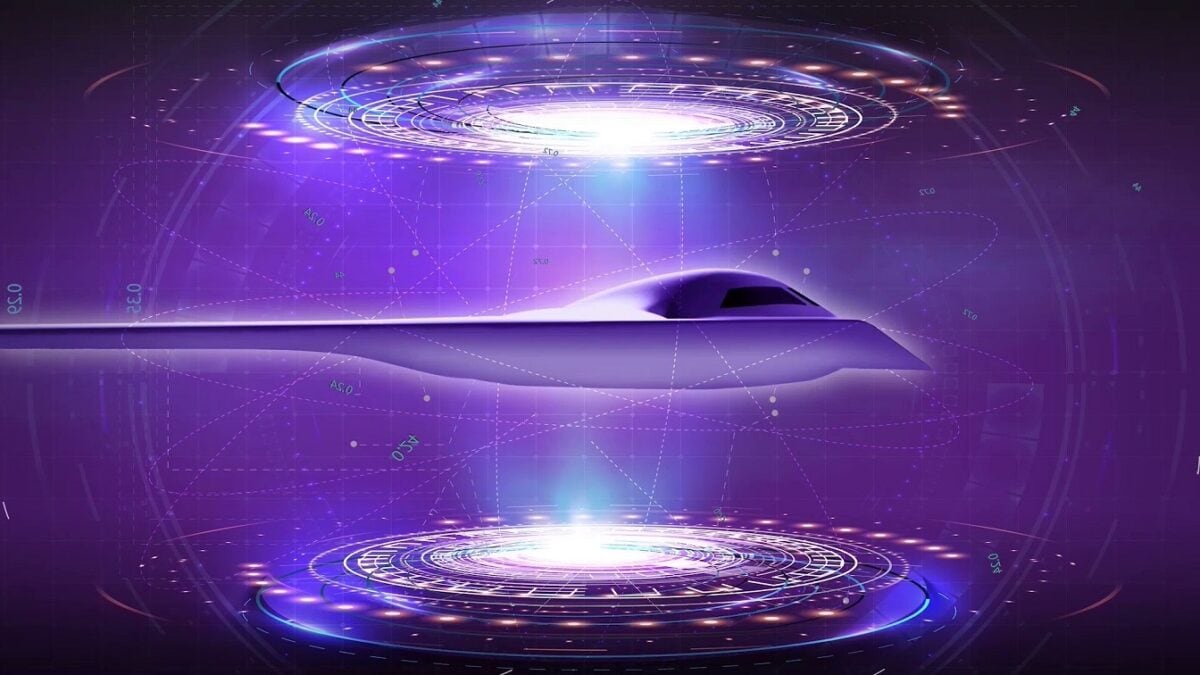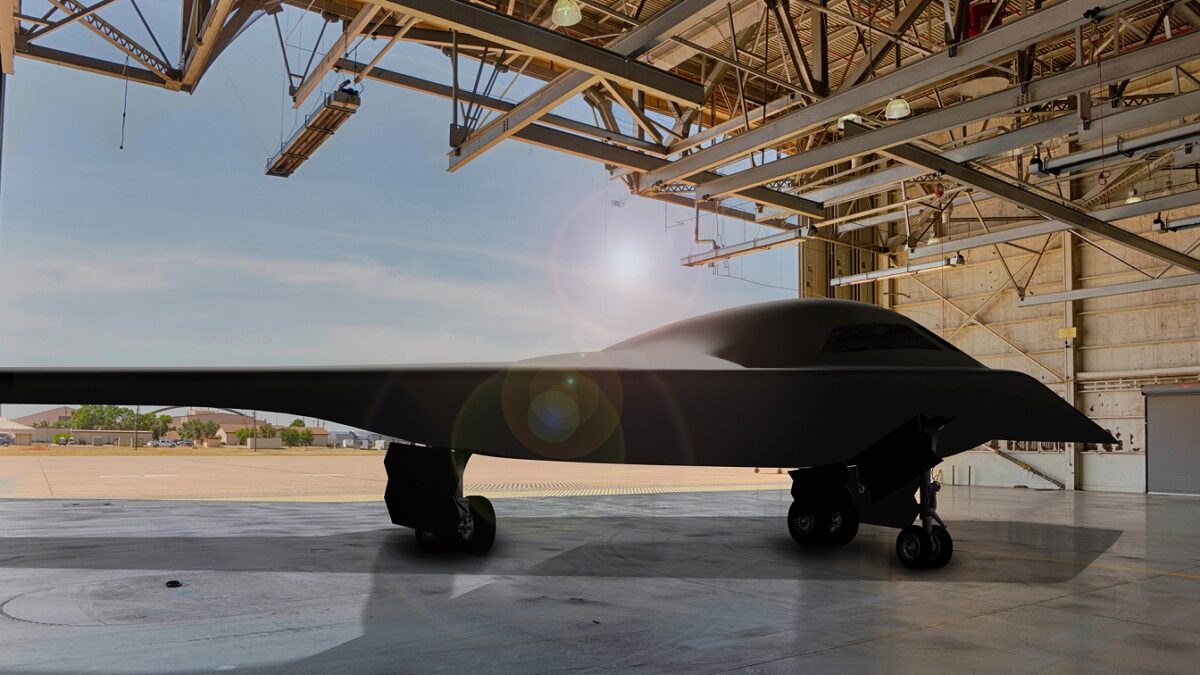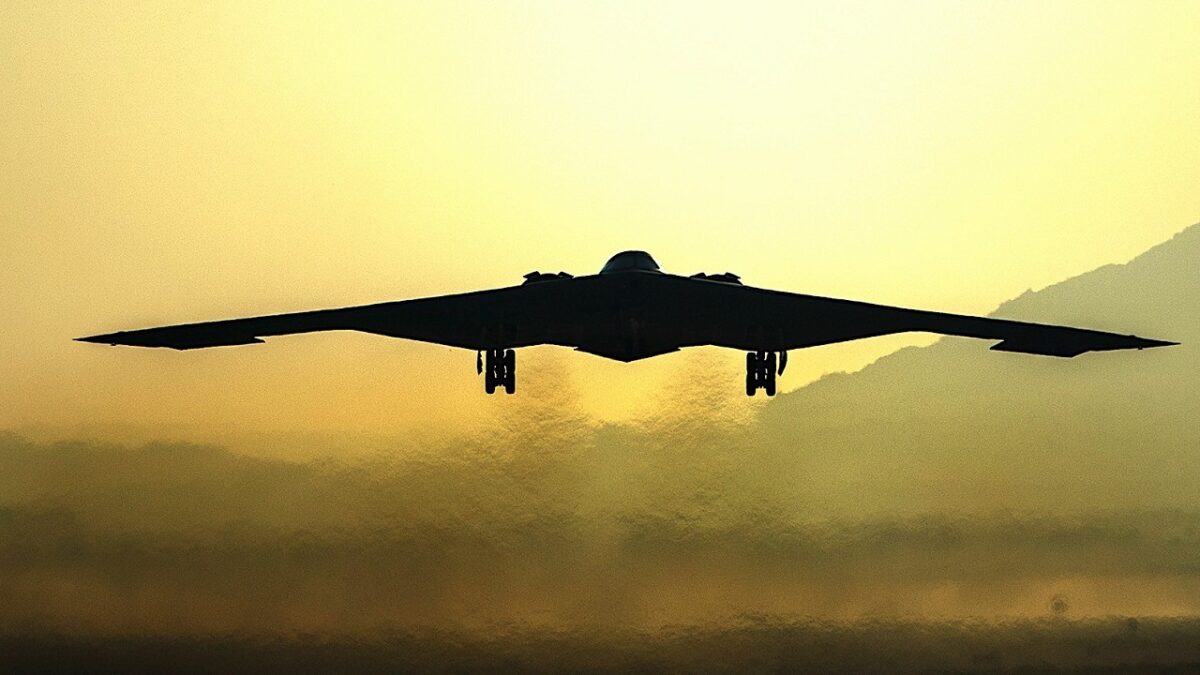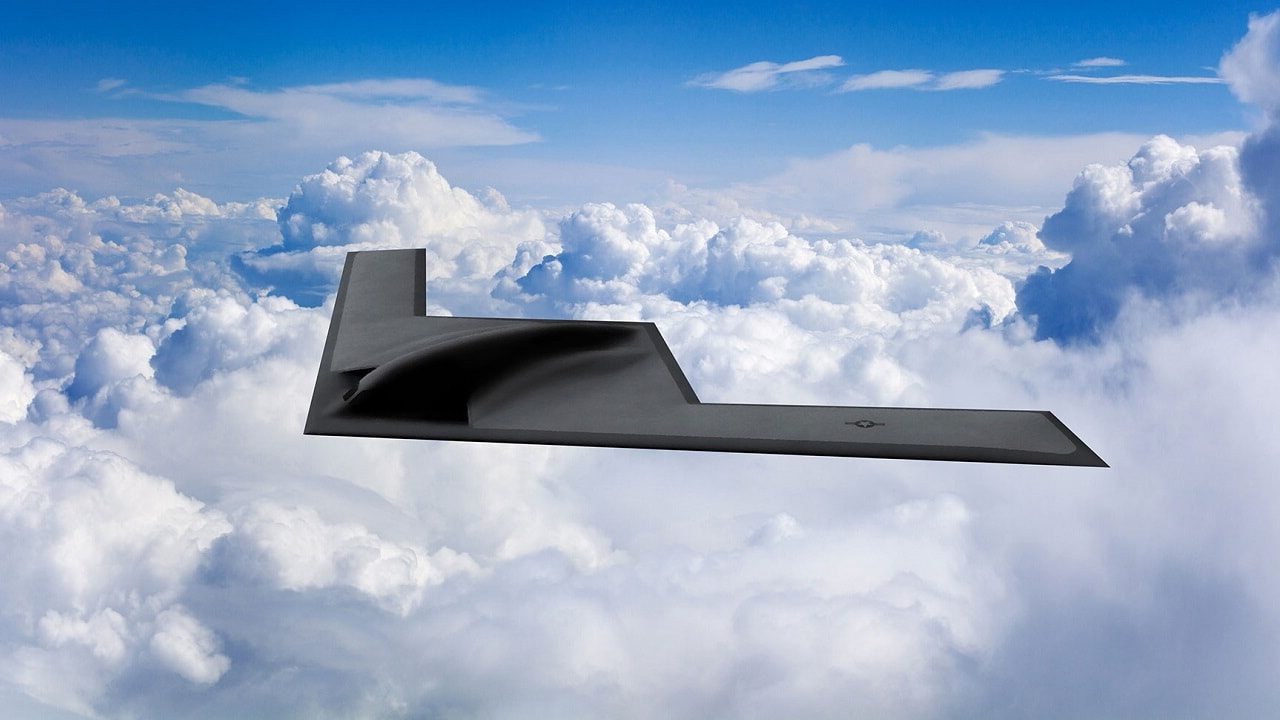Will the U.S. Air Force’s New B-21 Bomber Change Everything? It’s like the premier of a new movie. After a long wait with only previous glimpses in concept art, the new B-21 Raider bomber will be shown to the public for the first time on December 2. Northrop Grumman said October 20 on Twitter that the defense contractor would “unveil the world’s first sixth-generation aircraft.” This new arrival will come at the company’s factory in Palmdale, California.
B-21: The Suspense Is Building
There are at least six of the B-21 test airplanes in assembly in California. The 11-second video included in the Tweet yielded few clues since the B-21 was covered in a veil. One can tell it is a flying-wing design under the cover. The video also said, “This Changes Everything.”
Going According to Plan
There hasn’t been a new Air Force bomber publicly showcased since the B-2 Spirit made its first appearance in 1988 – 34 years ago. 2022 has been a busy year for the B-21 Raider program. The first of the test bombers completed stress tests on the airframe in May.
Since then, it was evaluated after being powered up, subsystems were inspected, and paint and stealth coatings were applied.
The Air Force believes the B-21 will make its maiden flight in 2023. It is not clear if the public will be invited to that event. Northrop Grumman believes the timeline will be adjusted in order for the first bomber to be successfully ground-tested first.
No Cost or Schedule Slips So Far
Air Force brass and Members of Congress such as Senator Mike Rounds of South Dakota have said since summer that the B-21 was on time and under budget and that the first unveiling would be in early December, so the bomber is meeting its milestones. The B-21 will be an important leg of the nuclear triad in the coming decades if all goes well. It will also excel at precision strike for conventional weapons. The bomber should provide intelligence, surveillance, and reconnaissance data on its stealth flights and fool enemy air defenses with its electronic warfare capabilities.
Expensive Program for All That It Brings to the Table
The Air Force hopes to purchase at least 100 of the new bombers. They won’t come cheap – ringing in at $639 million each. The branch is aiming for serial production by 2025 or 2026 and entry into service by the end of the decade. B-21s will be based out of Ellsworth Air Force Base, South Dakota.
Now Is the Time to Add to the Bomber Fleet
As air defenses improve in Russia and China, having a new stealth bomber to replace the B-1B Lancer and B-2 Spirit is imperative. The Air Force has only 20 B-2s along with 58 B-52Hs, and 45 B-1B Lancers. B-2s are becoming expensive to operate and the B-1B fleet is aging.
There Are Ways to Save Money
While the B-21 has a high price tag, the Air Force and Northrop Grumman plan to use cost savings during the manufacturing phase with digital tools and digital modeling. This will additionally cut down on maintenance downtime when the airplane enters service to allow for better turnaround times between missions. The Air Force also decided to abandon the idea to add a drone “Loyal Wingman” to the program to save money.

Northrop Grumman

Artist rendering of a B-21 Raider concept in a hangar at Dyess, Air Force Base, Texas, one of the future bases to host the new airframe. (Courtesy photo by Northrop Grumman)

B-2 Bomber. Image Credit. U.S. Air Force.
Ready for Prime Time
The B-21 has an interesting future ahead of it. The current stealth bomber fleet is small and getting older. The B-21 will be able to sneak close to China and Russia should it be needed in a future conflict and deliver its munitions with ease. It is not clear what its range is, but you can bet it will be capable of in-air re-fueling and be able to attack targets anywhere in the world. The bomber will likely give Russian and Chinese generals headaches after it makes its first flight next year.
Expert Biography: Serving as 1945’s Defense and National Security Editor, Dr. Brent M. Eastwood is the author of Humans, Machines, and Data: Future Trends in Warfare. He is an Emerging Threats expert and former U.S. Army Infantry officer. You can follow him on Twitter @BMEastwood. He holds a Ph.D. in Political Science and Foreign Policy/ International Relations.

